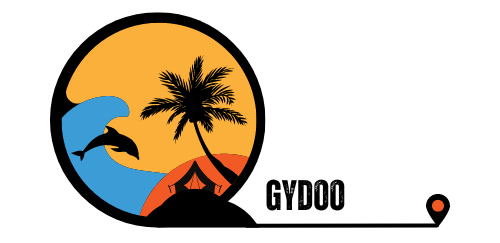First Impressions: Africa’s Most Expensive City
Landing in Dakar, Senegal’s vibrant capital and westernmost point of Africa, you quickly realize this isn’t your typical African city. With a population approaching 4 million and covering roughly 196,000 square kilometers, Dakar stands as Africa’s most expensive city – a fact that becomes immediately apparent in every aspect of daily life.
The Cost of Living Reality
Let me break down some surprising costs:
- A simple 1.5L bottle of milk: 3,450 CFA (460 INR)
- Six bananas: 1,700 CFA (250 INR)
- Basic t-shirt: 13,500 CFA (2,000 INR)
- Gym day pass: 5,000 CFA (700 INR)
Cultural Landscape
Demographics and Religion
Senegal presents an interesting religious dynamic:
- 97% Muslim population
- 3% Christian and other faiths
- Secular government despite Muslim majority
What’s fascinating is the contrast between religious demographics and social freedom. Unlike stricter Muslim-majority countries, Dakar maintains a relatively relaxed atmosphere.
The African Renaissance Monument
Standing proud at 50 meters (170 feet) tall, the African Renaissance Monument represents both pride and controversy. Built in 2010 at a cost of $27 million, it’s Africa’s tallest statue and tells a complex story:
| Feature | Detail | Significance |
|---|---|---|
| Height | 50 meters | Tallest in Africa |
| Cost | $27 million | Controversial spending |
| Completion | 2010 | 50th independence anniversary |
| Symbolism | Family rising | African progress |
The monument sparked heated debate – while some saw it as a symbol of African pride, others questioned spending such vast sums in a country where 50% live below the poverty line.
Daily Life and Navigation
Transportation Innovation
Dakar’s transportation scene is evolving:
- Yango taxi app (similar to Uber)
- Traditional taxis
- Modern metro system
- Extensive bus network
The Yango experience proved particularly interesting – clean cars, fixed rates (2,000 CFA for a 20-minute ride), and professional service, though cash-only payments.
Digital Life in Dakar
Connectivity Costs
Getting connected isn’t cheap:
- Basic SIM card: 2,000 CFA (266 INR)
- 7GB data package: 5,000 CFA
- Additional calling package: 4,500 CFA
Orange emerged as the preferred provider, offering better coverage and reliability compared to competitors like Free.
Food and Dining
The culinary scene reflects Dakar’s unique position as a cultural crossroads:
Local vs International
- Lebanese restaurants (surprising 60,000 Lebanese residents)
- Traditional Senegalese eateries
- Modern cafes and bistros
Restaurant Experience
A meal at a Lebanese restaurant revealed much about local dining culture:
- Mixed clientele (Egyptian, Moroccan, Lebanese)
- Hookah culture similar to Middle East
- Late-night dining common (busy even at 11 PM)
Social Structure and Modern Life
Educational System
The school system reflects French influence:
- Six weeks of classes followed by two-week breaks
- Two-month summer vacation
- Bilingual education (French and English)
- Additional language options (Spanish)
Marriage Customs
Interesting social dynamics emerge:
- Polygamy common (25% of population)
- Up to four wives permitted
- Varies between local and expatriate communities
Fitness and Wellness
Exercise Culture
Dakar takes fitness seriously:
- Extensive beachfront gyms
- Open-air workout areas
- Modern fitness centers (though expensive)
- Active running culture along the corniche
Shopping and Retail
Market Reality
The high cost of living reflects in retail prices:
| Item | Cost (CFA) | INR Equivalent |
|---|---|---|
| Basic T-shirt | 13,500 | 2,000 |
| Water (1.5L) | 275 | 37 |
| Coca-Cola | 250 | 35 |
| Eggs (6) | 800 | 110 |
Language and Communication
Linguistic Landscape
- French (official language)
- Wolof (most commonly spoken)
- English (increasing in business)
- Various local dialects
Safety and Security
Neighborhood Variations
- Almadies (expat area) – generally safe
- City center – caution needed at night
- Beach areas – safe during day
- ATM usage – best during daylight
Local Insights
Business Hours
- Shops open late
- Extended evening hours
- Friday prayer times observed
- Sunday relatively quiet
Tips for Visitors
Essential Knowledge
- Carry cash (cards not widely accepted)
- Learn basic French/Wolof
- Respect prayer times
- Dress modestly
- Negotiate fairly but firmly
Cultural Observations
Modern vs Traditional
Dakar balances modernization with tradition:
- Contemporary architecture
- Traditional markets
- Modern shopping centers
- Ancient customs
Weather and Climate
The coastal location provides unique weather patterns:
- Sea breezes
- Moderate temperatures
- High humidity
- Pleasant evenings
Future Developments
City Growth
Dakar continues developing:
- New metro system
- Modern shopping centers
- Infrastructure improvements
- Cultural preservation efforts
Practical Advice
Daily Survival Tips
- Download Yango for transport
- Get an Orange SIM card
- Carry small bills
- Stay hydrated
- Learn basic greetings
Conclusion: The Real Dakar
Dakar defies easy categorization. Yes, it’s Africa’s most expensive city, but it’s also a place where tradition and modernity coexist in fascinating ways. From the controversial Renaissance Monument to the bustling Lebanese restaurants, from modern gyms to traditional markets, Dakar offers a unique glimpse into Africa’s future while honoring its past.
For visitors willing to look beyond the high costs and initial challenges, Dakar reveals itself as a city of contrasts and opportunities. Its position as West Africa’s hub for business, culture, and education makes it a fascinating destination for those seeking to understand modern Africa.
The city stands as a testament to Africa’s potential – expensive yet vibrant, traditional yet progressive, challenging yet rewarding. Whether you’re here for business or pleasure, Dakar leaves an indelible impression, forcing you to reconsider any preconceptions about African urban life.
Last Updated: October 2024
A journey through Africa’s most expensive city


